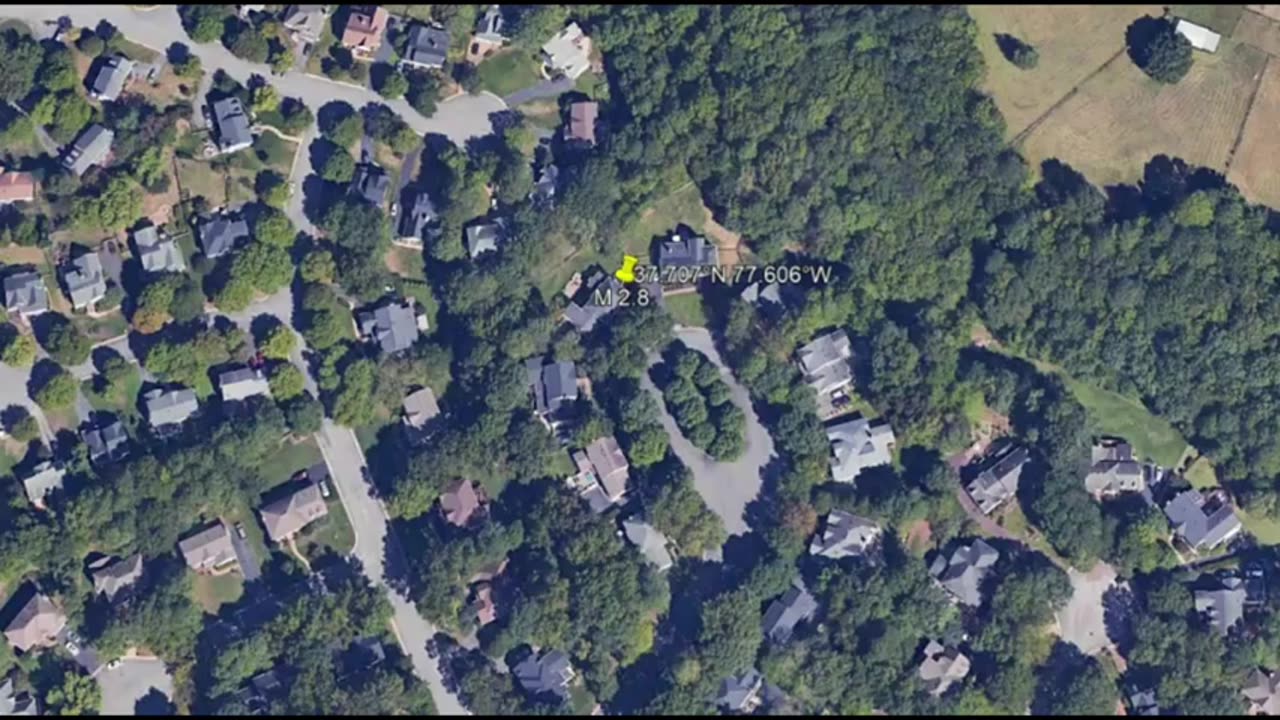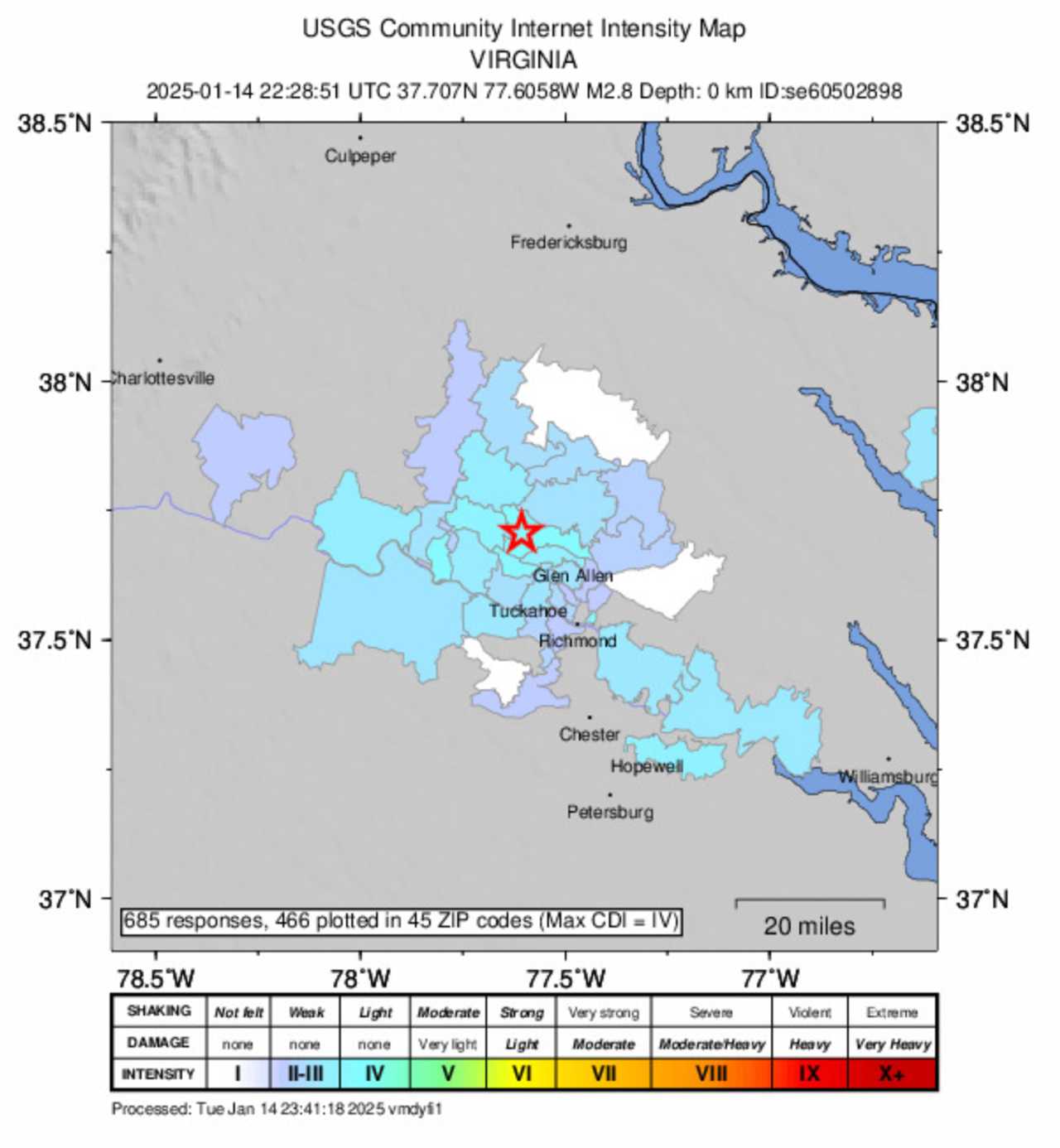Virginia Tremors: Earthquake Strikes the Commonwealth, Leaving Destruction and Panic in Its Wake
A powerful earthquake struck Virginia on [insert date], sending shockwaves through the Commonwealth and leaving a trail of destruction in its wake. The 6.2-magnitude quake, which occurred at 10:45 am local time, was felt as far north as West Virginia and as far south as North Carolina, causing widespread panic and disruption to daily life. As the state struggles to come to terms with the devastating impact of the earthquake, residents are left to wonder what the future holds for this once-thriving community.
With its rich history, scenic coastline, and bustling cities, Virginia is a state that is no stranger to natural disasters. However, the magnitude of the earthquake and its effects on the state's infrastructure and residents have left many to question whether the state's preparedness and resilience are sufficient to withstand such a powerful disaster. As the state begins the long and difficult process of recovery, it is clear that the Virginia tremors will have a lasting impact on the community.
Assessing the Damage
The earthquake's impact on Virginia was far-reaching, with reports of damage and destruction spanning the state from the coast to the mountains. As rescue teams made their way through the affected areas, they encountered scenes of devastation, with buildings reduced to rubble and trees uprooted from their roots.
According to official reports, the damage totals in excess of $100 million, with many more to come as the full extent of the destruction becomes clear. The impact on local businesses and residents has been significant, with many left without access to basic necessities like food, water, and shelter.
Identifying the Areas Most Affected
The areas most affected by the earthquake were largely rural, with many small towns and villages experiencing significant damage. The city of Harrisonburg, located in the foothills of the Blue Ridge Mountains, was particularly hard hit, with reports of buildings destroyed and roads impassable.
Power Outages and Emergency Response
The power outage that followed the earthquake has left many without access to basic necessities like light, heat, and communication. Emergency responders have been working tirelessly to restore power and provide aid to those in need, but the scale of the disaster has made it a challenging task.
• The Virginia Department of Emergency Management has deployed personnel and equipment to affected areas to provide support and aid.
• The American Red Cross has set up shelters and is providing food, water, and medical care to those in need.
• Utility companies have reported that the majority of power outages have been resolved, but some areas may experience ongoing disruptions.
Rebuilding and Recovery
As the people of Virginia begin the process of rebuilding and recovery, it is clear that the state will require significant resources and support to get back on its feet. The earthquake has highlighted the need for improved disaster preparedness and resilience, and the state is now more than ever committed to taking steps to mitigate the impact of future disasters.
Long-Term Recovery Efforts
The long-term recovery efforts in Virginia are expected to be a complex and challenging process. As the state moves forward, it is clear that a coordinated effort will be required to ensure that the affected areas are restored to their former glory.
Funding and Resources
The funding and resources required to support the recovery efforts in Virginia will be substantial. The state has already begun the process of identifying and securing funding, and is working closely with federal and local authorities to ensure that the resources needed to support the recovery efforts are available.
• The Federal Emergency Management Agency (FEMA) has activated its emergency response protocols to provide support to the state.
• The state of Virginia has allocated $10 million to support the recovery efforts.
• Private donors and organizations are also stepping forward to provide support and aid to those in need.
Lessons Learned
The Virginia tremors have provided a valuable lesson for the state and the nation. As the state and its residents look to the future, it is clear that improved disaster preparedness and resilience are essential for mitigating the impact of future disasters.
Building Resilience
The state's resilience and ability to withstand the impacts of the earthquake are a testament to the hard work and dedication of its residents. As the state moves forward, it is clear that building resilience will be key to ensuring that the effects of future disasters are minimized.
Community Engagement
Community engagement has been a critical component of the response efforts, with residents, local authorities, and emergency responders working together to support those in need. This collaborative approach has helped to ensure that the recovery efforts are efficient and effective.
• The community has come together to provide support and aid to those in need.
• Local authorities have worked closely with emergency responders to ensure that the response efforts are coordinated and effective.
• The state has established a task force to oversee the recovery efforts and ensure that the affected areas are restored to their former glory.
Conclusion
The Virginia tremors have left a lasting impact on the Commonwealth, causing widespread destruction and disruption to daily life. As the state begins the long and difficult process of recovery, it is clear that the road ahead will be challenging, but the resilience and determination of its residents will ultimately ensure that the state emerges stronger and more resilient than ever before.
Matthew Gray Gubler Partner
Metro Boomin Height
Helmut Newton Famous Pos
Article Recommendations
- Christian Keyes Father
- Nyannie
- Sondra Blust
- Jaydenaniels Wife
- Aishah Hasnie No Makeup
- Tommy Mottola
- Claire Rushbrook
- Diddy Gal Gadot
- Catherine Bach
- Arielle Kebbel



